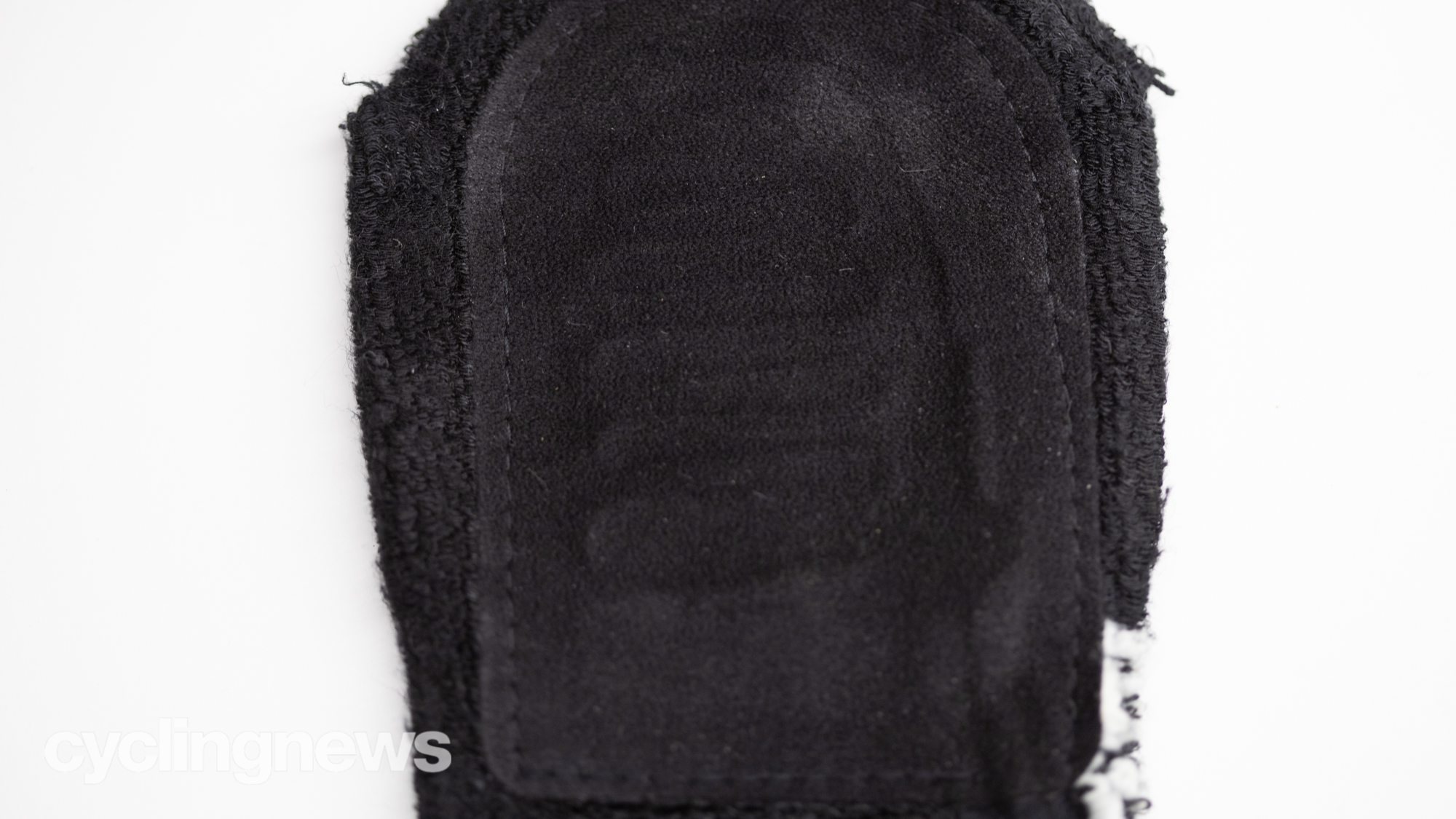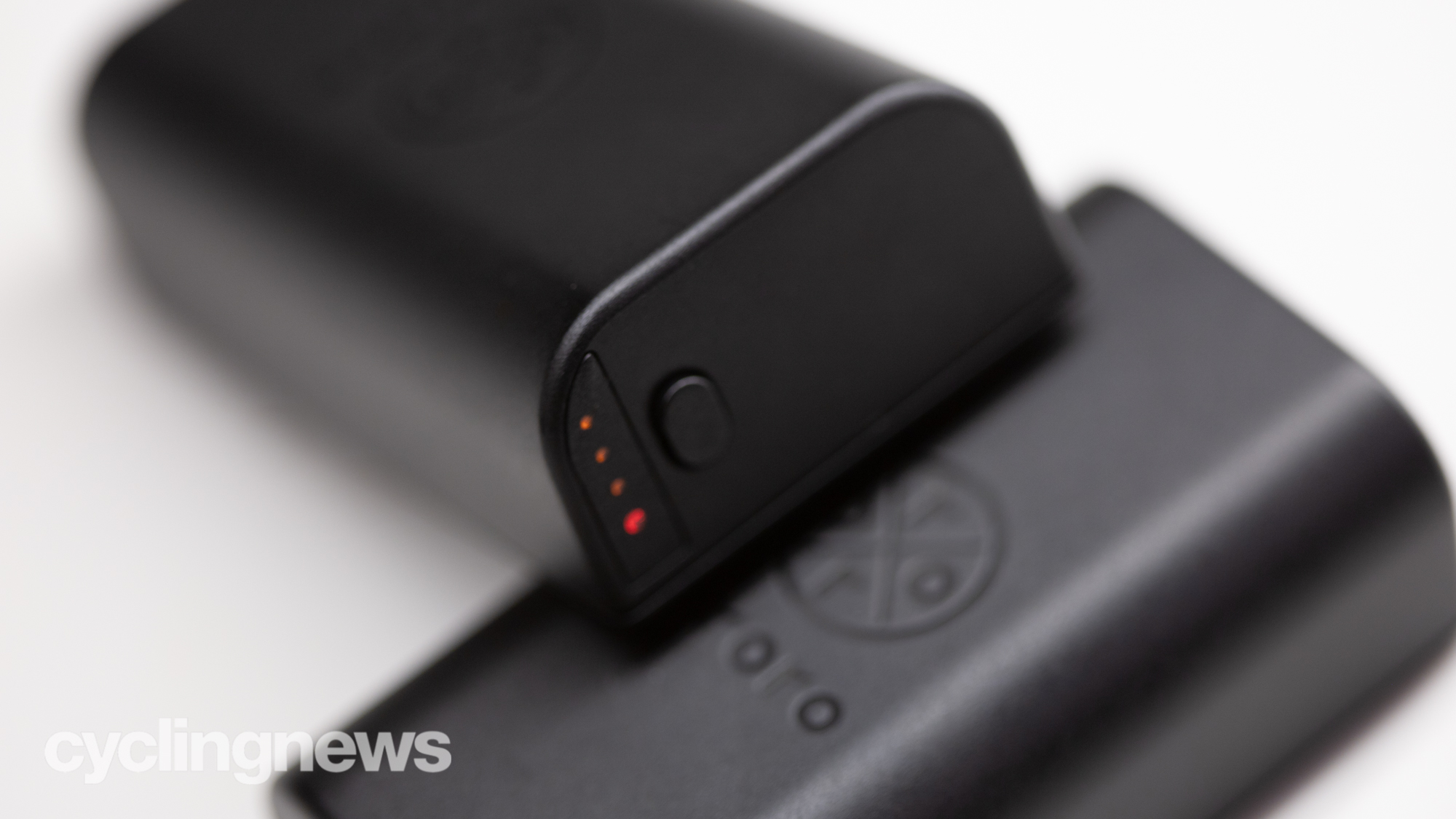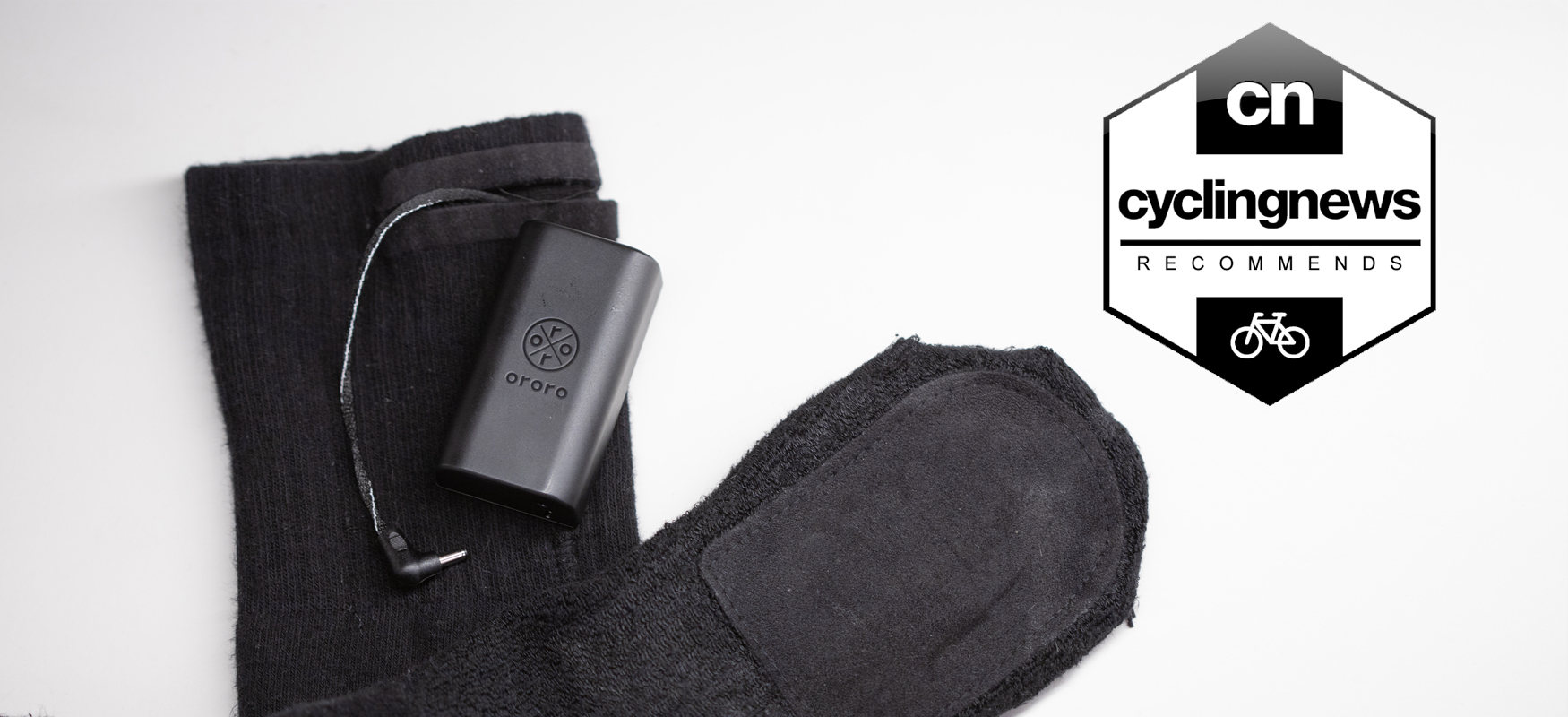Cyclingnews Verdict
For the coldest, wettest rides, there’s no substitute for some kind of external heat on your feet. The Ororo Sequoia heated socks offer the performance of a chemical warmer without being disposable.
Pros
- +
Long battery life
- +
Washable
- +
Operates when heating element is wet
- +
Localised under the front of the foot
- +
USB charging port on batteries
Cons
- -
Length of sock makes it difficult to change batteries mid-ride
- -
Heating element is slightly too far back
You can trust Cyclingnews
If you've spent much time riding during the winter you almost certainly will have picked up a pair or two of the best winter cycling socks on the market. From there it's likely that you'll want to add a pair of the best cycling overshoes and for some climates a pair of the best winter cycling shoes will be necessary. If you ride in cold enough weather, particularly if it's wet also, none of this is going to be enough though.
When you've exhausted all the options you will find chemical warmers are the difference between painfully numb toes and relative comfort. There is another option though and that's heated socks. It's a non-disposable alternative that offers a similar experience. Since there's nothing cycling specific on the market, we wanted to see if there was something that would work anyway.
Ororo has a reputation for building a variety of heated clothing. In a sea of unknown brands, it's managed to stake a claim of quality. With that in mind, we checked out the Ororo Sequoia heated sock to see if it matched the claims and how they handled cycling. If you've tried everything to keep your feet warm and you are wondering about heated socks, keep reading to see what we thought of this option.

Design and aesthetics
The Ororo Sequoia socks are socks and they aren't the kind of fun-looking socks you might see show up in our list of the best summer cycling socks. There are three colours available including a black and either an orange or grey that mix black along with the chosen colour. The colours tend towards sombre and unnoticeable.
These are a utilitarian product but they do have plenty of design features. To start with, they definitely break all the UCI rules and come to a stop just below the knee. On the outside of each sock is a pocket where the battery fits. The pocket sits between two layers of sock and that double layer design encompasses the upper part of the sock. Below the double layer gripper section, the socks get thicker to match the double layer upper.
Inside the battery pocket is an L-shaped plug. On one side it plugs into the battery while on the other it connects to a fabric covered wire. The wire travels down the outside of the leg inside of a channel that keeps it from moving around. Near the heel it starts to curve around the outside of the foot until it heads underneath and connects to the heating element at the front of the foot.
The actual heating element is a long piece of wire. Flip the socks inside out and you can easily see it zig zagging back and forth inside the protective pocket. The area it covers starts just behind the ball of the foot and ends just behind the pad of the toes.
The battery is a 3,250mAh lithium unit that also houses all of the smarts. When you plug the battery into the sock it will turn on in the highest setting then after five minutes drop back to medium. There is a small LED that glows red, white, or blue to indicate high, medium, and low settings. Press the single button to cycle between modes or hold it down to turn it off. Stated run times are five hours on high, seven hours on medium, and 10 hours on the low heating setting. Next to the LED that indicates mode is a series of three LED lights that indicate the remaining battery.

Performance
The first thing I recommend doing is plugging in your new batteries when you get them. I did not and pretty immediately experienced dead batteries on the first ride with the Ororo Sequoia socks. The directions do spell this out but I was sure the battery indicator was showing full. In this case it seems following the directions is a wise choice. They charge via USB and come with a small Y-shaped USB cable that makes it easy to charge both batteries at the same time.
Once they are ready to use, there is a bit of a process involved in getting them on. The cable that connects the battery to the heating element is able to move inside the channel that houses it. If you pull from the top of the sock, the cable will move around and it always sounds like something is going to break. Instead, work the sock up slowly from the bottom. As you get everything situated, do what you can to get the heating element sitting just a little farther forward if, like me, you are most concerned about your toes.
When I started the process of reviewing these, I asked how they would handle a day of rain on the bike. The answer was that the battery needed to stay dry and a rainy day might not be the best use. So of course, the first thing I did was use them for a rainy day.
The Ororo Sequoia socks are washable. That means all the wiring is waterproof and it's the battery that needs to stay dry. If you've got hard shell waterproof trousers for riding, the battery will stay dry and they have so far worked fine for me even when the bottom of the sock is completely wet. Just make sure the battery and the connection to it stays completely dry.
The day before I wrote this review, I spent about nine hours, a little over seven actually moving, outside covering 100 miles. The temperature hovered between 30F / -1C and 35F / 2C and it rained the entire day. As the light was fading, I climbed up to an elevation of 1,000ft / 300m where I got to experience a hefty helping of snow. For the first seven hours of the ride, I kept the Ororo socks at the medium level and even though my feet were wet, and the temperature very low, my toes were never in pain.
Don't expect tons of heat. Although the temperature rating claims they reach 131F/55C for the medium setting I experience them as being very similar to hot hands chemical warmers. That product claims 99F / 37C average but in use, the two feel about the same. It's warm enough to keep the chill away, and be noticeable, but not enough to feel like a heater against your feet.

Verdict
The knee-length design of the Ororo Sequoia creates a challenge in a cycling environment. It's difficult to reach under the lower cuff of most bib tights and get as high as the knee. The design makes it mostly impossible to change batteries. Also, the low setting is too low to be usable. That means you really want to expect a usable run time of at maximum seven hours. If that works for your coldest ride then these heated socks are an excellent option.
Tech Specs: Ororo Sequoia Heated Socks
- Price: £69.99 / $99.99
- Run times: 5 hrs on high, 7 hrs on medium, 10 hrs on low heating setting
- Battery capacity: 3,250mAh
- Available Sizes: S, M, L
- Available Colours: Black, Orange, Gray
- Weight: One sock with battery in size medium 136 grams
Josh hails from the Pacific Northwest of the United States but would prefer riding through the desert than the rain. He will happily talk for hours about the minutiae of cycling tech but also has an understanding that most people just want things to work. He is a road cyclist at heart and doesn't care much if those roads are paved, dirt, or digital. Although he rarely races, if you ask him to ride from sunrise to sunset the answer will be yes. Height: 5'9" Weight: 140 lb. Rides: Salsa Warbird, Cannondale CAAD9, Enve Melee, Look 795 Blade RS, Priority Continuum Onyx

